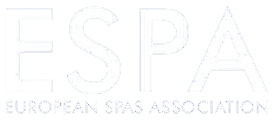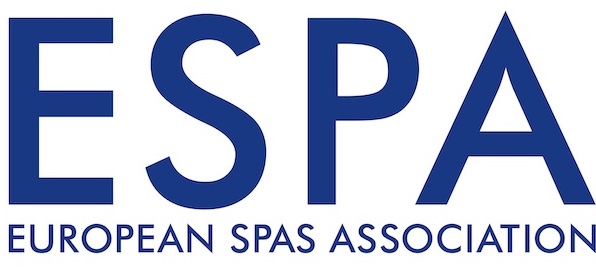An Interview with Ioana Marian, Founder of SpaEdu & Wellandia, Romania — Winner of the ESPA Innovation Award for Innovative Spa Education
1. SpaEdu by Wellandia is a spa management academy launched two years ago in Romania and is growing fast. What enabled this acceleration?
We founded SpaEdu after 15 years of experience with Wellandia—a professional hub built since 2010 to strengthen the Spa & Wellness industry:
-a marketing and knowledge platform,
-organiser (since 2014) of the annual Spa Romania Conference & Awards,
-a specialised recruitment platform, and
-career structures designed to align with the EU Pay Transparency Directive (EU) 2023/970.
All Wellandia programmes and solutions were created in response to requests from spa professionals, shaped by the real constraints they face. At a certain point, we realised we couldn’t achieve our objectives without a dedicated spa academy.
SpaEdu is the education division of Wellandia—launched in 2023 as a natural next step to offer programmes, management courses, training and resources aligned with top international standards (e.g., CIDESCO).
2. What was the most challenging aspect of achieving a CIDESCO accreditation, and how do you measure the real-world impact of your graduates?
We created this course to raise the level and standards of the Spa market in Romania, aligned with top international standards. The diploma is valuable, but not the main goal. That’s why we deliver a strictly applied programme – designed to generate visible improvements in service quality and sales during the course.
Early proof: “I recovered the full course fee with a single campaign… and overall the investment paid back tenfold.” — Elena Nastaca, Owner & Director, Terapia Thai
The challenge: aligning an “implementation-first” model (changes implemented while studying) with the CIDESCO curriculum, in a format workable for very busy managers.
Our solution: we developed the SpaEdu Method, used across all our courses (including Spa Reception, First-Time Manager, etc.).
The SpaEdu Method (for the Spa Management course):
-Course handbooks on the e-learning platform: completed at one’s own pace before live sessions; additional materials; annual updates (trends, findings, methods).
-21 live Zoom sessions, highly interactive (no lectures—case studies only), on a fixed weekday, starting at 17:00 (EET/EEST, Bucharest time).
-Quizzes on the e-learning platform to verify theoretical understanding before & after the live sessions.
-A team of 11 practicing trainers (Spa professionals and related fields), each teaching in their strongest areas of expertise.
-15 practical projects were developed for each participant’s own Spa, corrected until they reach the ready-to-implement standard.
-7 live Q&A sessions (what was applied, what worked/didn’t, where they got stuck—very practical dialogue with trainers and peers).
-21 individual mentoring sessions (one-to-one) with the trainers.
-Final Business Plan (a CIDESCO requirement).
SpaEdu differentiators:
-Live cohort delivery + real cases, not only self-learning on a platform.
-Competency-based evaluation: projects are iterated until usable in the Spa (ready-to-implement), not merely “submitted and graded.”
-One-to-one mentoring at scale (21 sessions/person) + cohort Q&A for shared pace and fast unblocking.
-Immediate transfer to operations: implementations within 24h, sustained across the 12 months.
How we measure impact (during the course):
-Implementation rate: each of the 16 modules produces a concretedeliverable (SOPs, service menus, staffing plans, pricing, KPI dashboards), iterated to ready-to-implement.
-Business performance signals: changes implemented the same/next day; visible impact in P&L (Profit & Loss) and financial KPIs during the course.
-Standardisation & adoption speed: a shared operating language across locations; tools spread via Wellandia Working Groups, the Spa Conference, the Balneary Tourism Congress, three free annual mentoring programmes and two free experience-exchange programmes.
-External validation: candidates who chose to sit the CIDESCO exam achieved a 100% pass rate (first two sittings).
“CIDESCO accreditation was the goalpost, but not the finish line. The real challenge was aligning international standards with the daily realities of busy Spa managers — and proving that learning can directly improve P&L results.”
Ioana Marian, Founder of SpaEdu & Wellandia
3. One graduate said the investment “paid back tenfold.” How do you structure learning to generate this ROI?
We structured learning around two main axes and two enablers:
Main axes:
-Implement immediately after each module: participants build the practical project for their own Spa; trainers correct/iterate until ready-to-implement.
-Interactive learning on real cases: debate on situations lived in Spa operations; the cohort co-creates solutions usable “tomorrow morning.” Postclass momentum sustains immediate application; the weekly rhythm keeps it going. Note: no extra spending is required during the course (except for Business Plan projects, typically post-course). ROI comes from changing the way teams work (processes, approaches, standards).
Accelerated internal transfer: within 24 hours after each live course, participants brief their teams on what they learned and agree on new actions for the following week. Normally change meets resistance; here, post-class energy increases team openness.
Observable evolution: in 2023, most participants did not work with SOPs; in 2025, all teams in participating Spas use SOPs as the working standard.
Enablers:
-Digital toolbox + unlimited access on the e-learning platform: SOPs, checklists, forms, financial models, service-menu frameworks, etc.; unlimited, ongoing access on SpaEdu’s own platform to quickly retrieve materials and trainer feedback.
-Predictable cadence (same weekday/time): managers can plan ahead without disrupting operations.
4. Your first two cohorts achieved a 100% CIDESCO pass rate. What specific elements of your programme contribute to this success?
The CIDESCO exam has a theory component (based on the CIDESCO curriculum) and a practical component (Business Plan + presentation).
How we prepare theory:
-Course handbooks and additional materials on the platform.
-Short quiz sets before and after live sessions (check understanding and lock in concepts).
-Thematic reviews built on quizzes; instant platform feedback (see the correct answer and learn from mistakes).
How we prepare practice (Business Plan):
-Throughout the year, participants complete 15 practical projects and are trained to think integrated, 360°.
-Example: in the Marketing project, they conduct 12-15 client interviews, receive feedback, and repeat where needed—so they enter the Business Plan with a clear method.
-Two internal exams with a SpaEdu committee: questions, feedback, and refinement of the presentation before the official sitting.
Why it works: continuity across theory-application-iteration; a ready-to-implement standard for every deliverable; recurring individual feedback; a predictable structure that lets managers learn without blocking daily operations in the Spa.
Result: 100% pass rate across the first two sessions and more importantly – operational performance gains during the course itself.


